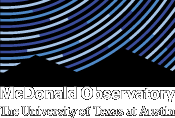Texas Astronomer Helps NASA Planet Hunter Find its First Earth-Sized, Habitable-Zone World
NASA’s Transiting Exoplanet Survey Satellite (TESS) has discovered its first Earth-size planet in its star’s habitable zone, the range of distances where conditions may be just right to allow the presence of liquid water on the surface. A team of scientists, including Andrew Vanderburg of The University of Texas at Austin, confirmed the find, called TOI 700 d, using NASA’s Spitzer Space Telescope and have modeled the planet’s potential environments to help inform future observations.

